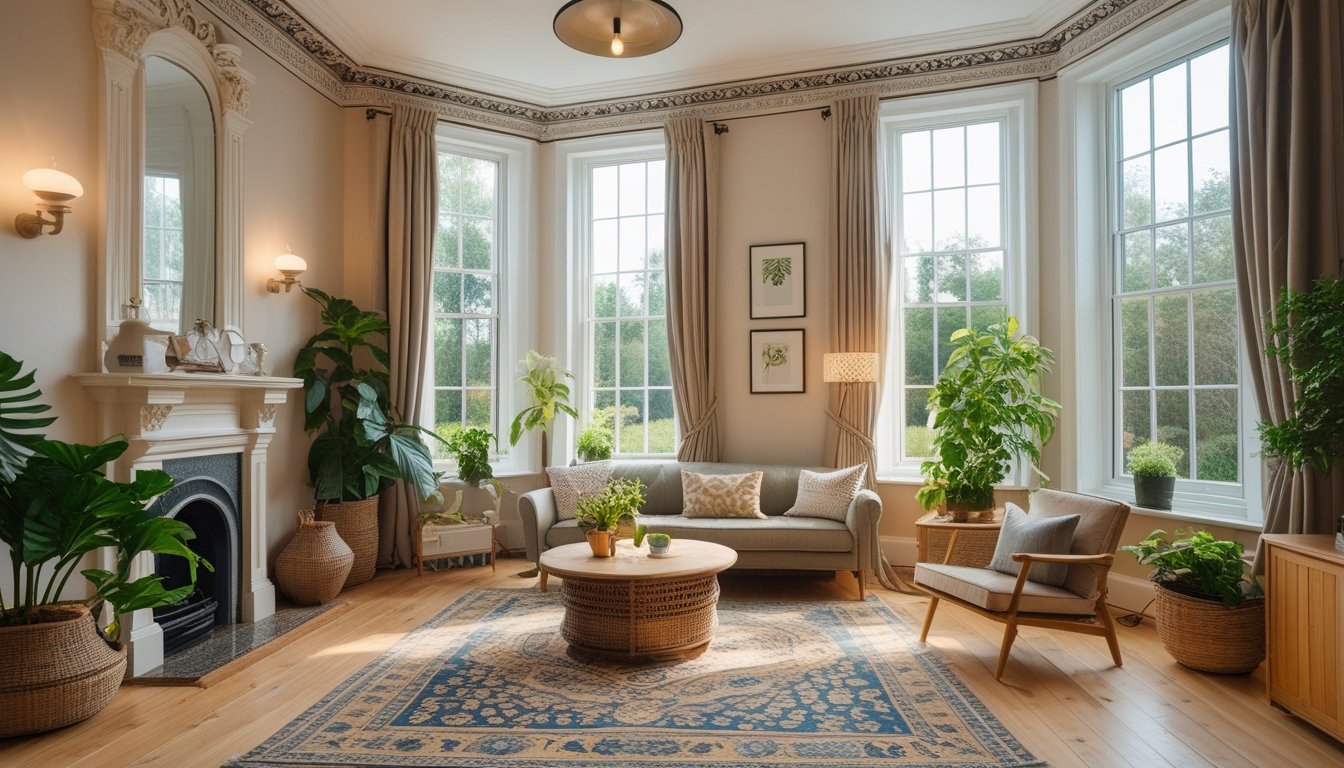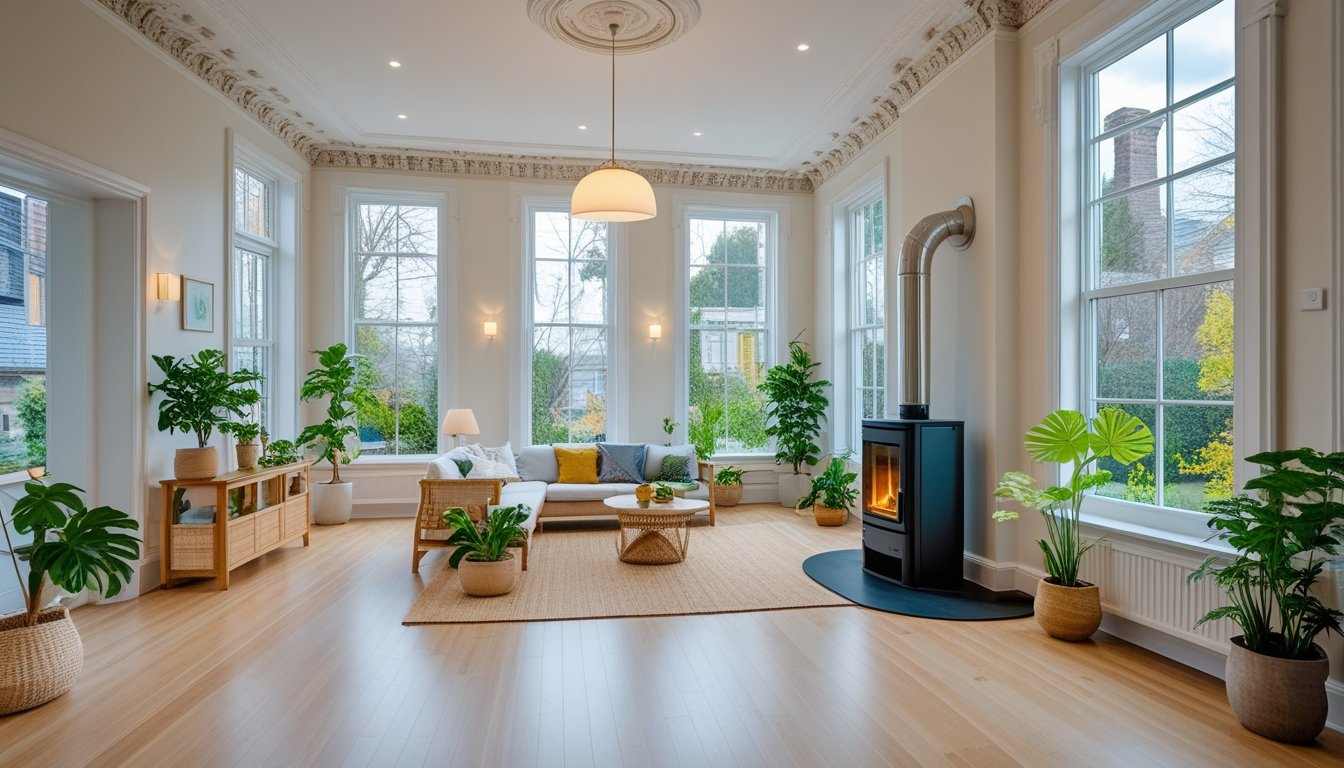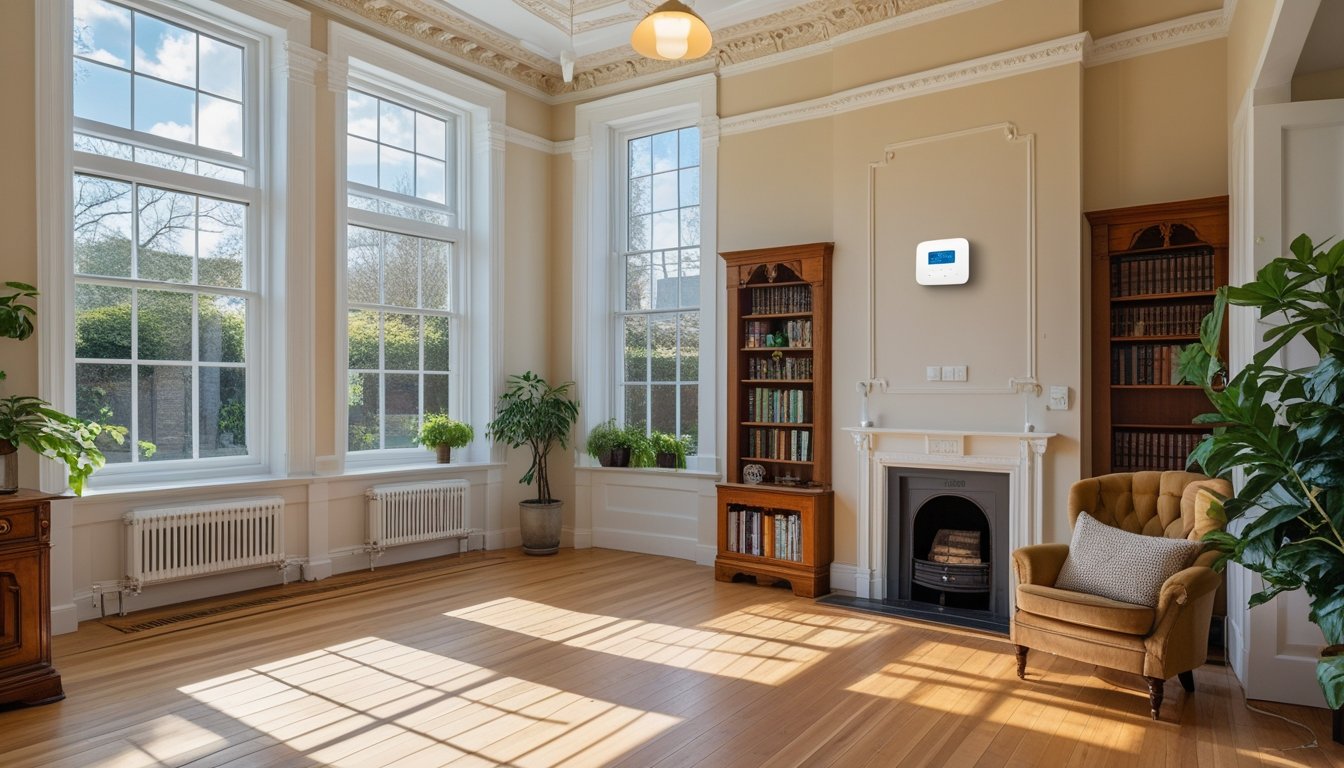Late updated: 29 Jul 2025 11:07
Written by: Daniel Harper
Creating An Energy-Efficient Victorian Home Interior: Timeless Design Meets Modern Sustainability
Creating an energy-efficient Victorian home interior presents a rewarding challenge. While these charming homes boast historical architecture, they often lack the thermal efficiency of modern dwellings. To bridge this gap, we can implement a blend of traditional conservation techniques and advanced technology. By maintaining the home’s original character while making strategic updates, we can enhance both comfort and sustainability.

Many strategies are low-invasive, such as improving insulation and draught-proofing existing features like windows and doors. We aim to retain the home's period aesthetics while achieving significant energy savings. By incorporating sustainable materials in our renovations, we not only preserve the historical integrity but also create an eco-friendly living environment.
Advanced eco-friendly upgrades, such as solar panels and energy-efficient heating systems, further optimise our Victorian abode. Integrating these technologies allows us to enjoy modern conveniences alongside the timeless elegance of our vintage home.
Key Takeaways
- Combine tradition and technology for energy efficiency.
- Use low-invasive methods like better insulation.
- Integrate modern eco-friendly upgrades.
Core Strategies for Energy-Efficient Victorian Interiors
Creating an energy-efficient interior in a Victorian home involves respecting its historical charm while integrating modern energy solutions. Our focus will be on preserving period features, improving insulation, and installing efficient heating and cooling systems.
Retaining Period Features While Enhancing Energy Efficiency
Balancing heritage details with sustainability requires a careful approach. We can restore original sash windows with draught-proofing techniques and consider adding secondary glazing. This approach maintains the character of the windows while improving thermal efficiency.
When addressing period fireplaces, sealing them when they are not in use is an effective way to prevent heat loss. Choosing energy-efficient lighting while retaining period-correct fixtures involves using LED bulbs in existing fittings. By creatively combining historical aesthetics with modern amenities, we can enhance both beauty and energy performance.
Improving Insulation and Draught Proofing
Victorian houses often lack proper insulation, leading to significant energy inefficiencies. One method is to add insulation to lofts and underfloor spaces, which is less invasive and maintains architectural integrity. We should also focus on wall insulation, choosing breathable materials that prevent moisture problems and protect the building fabric.
For draught proofing, sealing gaps in windows, floors, and doors is essential. A comprehensive approach involves not just obvious leaks but fine-tuning lesser-known areas like chimneys and letterboxes. Through these measures, we can enhance comfort and save on energy bills without compromising the character of Victorian cottages.
Installing Energy-Efficient Heating and Cooling Systems
Modern heating and cooling systems can dramatically improve a Victorian home's energy footprint. By installing high-efficiency boilers or heat pumps, we can tailor systems that complement the existing layout without compromising design aesthetics. Integrating smart thermostats offers precise control and reduces energy consumption.
Radiant floor heating is another option that discreetly provides warmth without detracting from the interior design. When combined with proper insulation, such systems effectively balance comfort and efficiency. These innovations ensure a Victorian home not only maintains its historical elegance but also meets contemporary energy standards.
Advanced Eco-Friendly Upgrades and Renewable Solutions

To make our Victorian homes energy-efficient, we need to integrate advanced eco-friendly upgrades. By harnessing solar power, installing sustainable appliances, and selecting modern window and door solutions, we can reduce energy consumption and promote sustainability.
Incorporating Solar Panels and Renewable Energy
Solar panels can transform our old Victorian homes into modern energy-efficient residences. By installing panels on rooftops or available outdoor spaces, we convert sunlight into electricity, markedly reducing our reliance on non-renewable energy sources. Recent technological improvements mean even historical buildings can accommodate solar installations without compromising aesthetics.
A reliable inverter system pairs with the panels, optimising energy flow into the home. Energy storage solutions, like advanced battery systems, store excess energy generated during peak sunlight hours. This stored energy can power our home during cloudy days or night-time, ensuring energy availability at all times.
In regions with favourable sunshine, solar panels lead to a noticeable cut in electricity bills. Additionally, many governmental and regional programmes offer incentives or grants to ease the initial cost of installation, making this an economically viable solution for Victorian homes.
Upgrading Lighting and Appliances for Sustainability
Switching to energy-efficient lighting and appliances is crucial for Victorian homes. By replacing traditional incandescent bulbs with LED or compact fluorescent lamps (CFLs), we substantially lower energy use. LEDs, for instance, use up to 80% less electricity and last longer than their incandescent counterparts.
Modern appliances designed with energy-saving features can further enhance our home’s efficiency. Investing in appliances with a high Energy Star rating ensures reduced power usage. Smart technologies enable us to control and monitor these appliances remotely, allowing precise management of energy consumption.
Incorporating motion sensors and timed lighting systems can prevent unnecessary energy expenditure. These features turn off lights automatically when no one is in a room, perfect for reducing waste in large residences typical of the Victorian era.
Modern Window and Door Solutions
Traditional Victorian windows, though charming, are typically less effective at insulating. Double or triple-glazed windows offer vastly improved thermal performance. These modern alternatives reduce heat loss and prevent drafts, maintaining consistent indoor temperatures.
Upgraded doors with solid cores or insulated materials also aid in improving energy efficiency. Installing weather stripping or draught excluders can eliminate gaps, further cutting down on heat loss.
By focusing on energy performance ratings, we select windows and doors that align with our home’s aesthetic while reducing our energy footprint. These measures not only improve comfort but also significantly contribute to an eco-friendly lifestyle.
Frequently Asked Questions

Enhancing energy efficiency in Victorian homes involves balancing modern upgrades with preserving historic features. This includes careful insulation solutions, effective draught-proofing techniques, and integrating sustainable materials without altering the home's character.
How can I improve my Victorian home's insulation while maintaining its traditional aesthetics?
We suggest using internal wall insulation that respects the existing architecture. Aerogel plaster or insulating lime-based plaster can enhance energy retention while preserving historical detailing. Alternatively, consider secondary glazing options to help keep the cold out and the charm in.
What are the most effective strategies for draught-proofing in historic Victorian properties?
Draught-proofing original features like sash windows and doors is essential. We recommend fitting brush strips or draught-proofing strips, which provide a discreet solution. Chimney balloons can help seal unused chimneys, preventing heat loss without permanent modifications.
Which types of energy-efficient lighting best complement the interior design of a Victorian house?
Choosing LED bulbs with a warm light temperature can retain a traditional feel. We find that vintage-style LED filament bulbs work best in maintaining a classic look. Use dimmable fixtures to adjust light levels, ensuring both energy efficiency and comfort.
Can you retain original Victorian windows and still achieve high energy efficiency?
To keep original windows while improving efficiency, secondary glazing is widely effective. It adds an additional layer of insulation without altering the window's appearance. Regular maintenance, such as sealing and repairing any damaged frames, also contributes to better performance.
What are the best practices for installing modern heating systems in Victorian homes without disrupting their character?
We recommend using modern slim-profile radiators or underfloor heating systems. These solutions offer effective performance without altering the home's historic appeal. Utilising programmable thermostats and smart radiator valves can improve energy management discreetly.
How can I incorporate sustainable materials into my Victorian home renovation?
Opt for sustainably sourced timber and recycled materials to maintain environmental responsibility. We encourage the use of eco-friendly paints and finishes. Hempcrete is an innovative option that provides thermal insulation and is compatible with traditional construction techniques.
